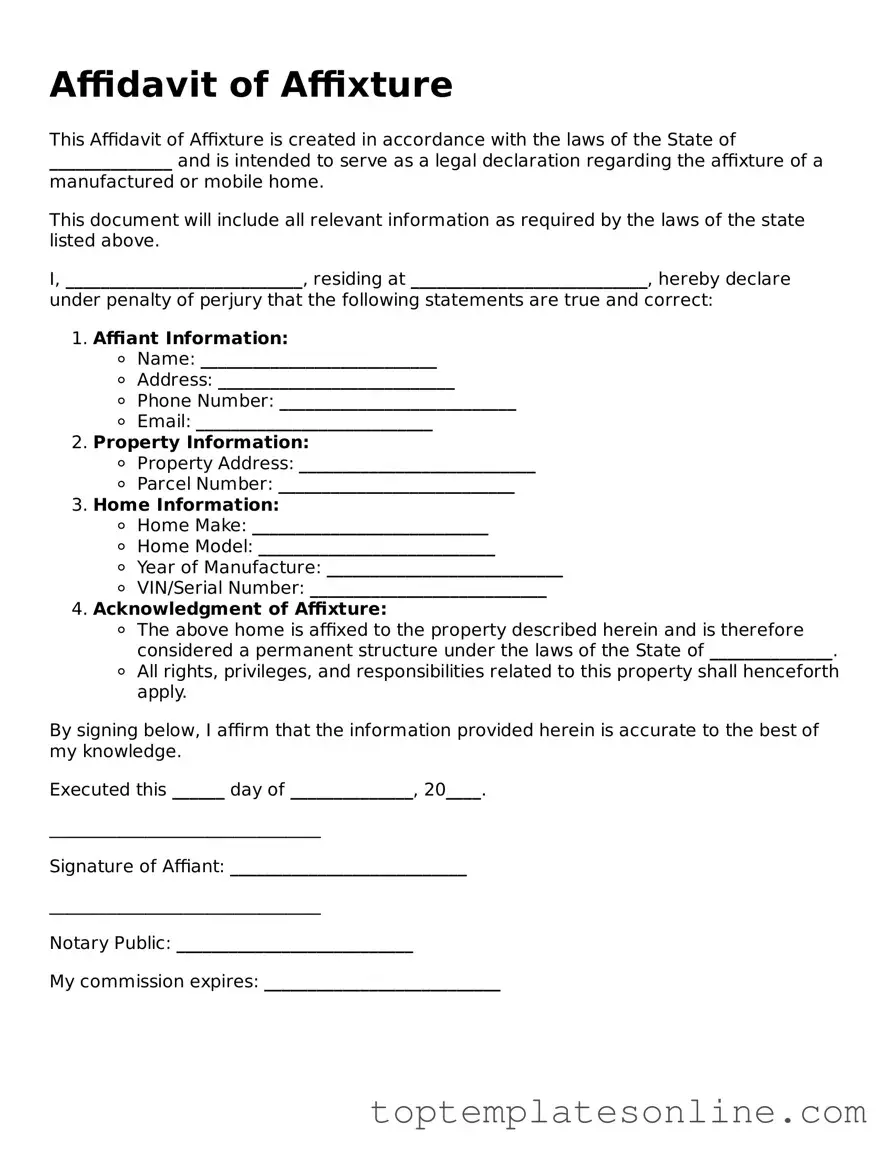The Affidavit of Affixture is a crucial document in the realm of real estate and property ownership, particularly when it comes to manufactured homes. This form serves to establish a manufactured home as a permanent fixture on a piece of land, thereby linking the home to the property and allowing for a clearer title transfer process. By completing this affidavit, homeowners can effectively convert their mobile or manufactured homes into real property, which can enhance the value and marketability of the property. The form typically requires details such as the identification of the home, the property location, and the signatures of the parties involved. It also often necessitates the involvement of a notary public to ensure the authenticity of the signatures. Understanding the Affidavit of Affixture is essential for homeowners, buyers, and real estate professionals alike, as it lays the foundation for legal ownership and can impact property taxes, financing options, and resale potential.
